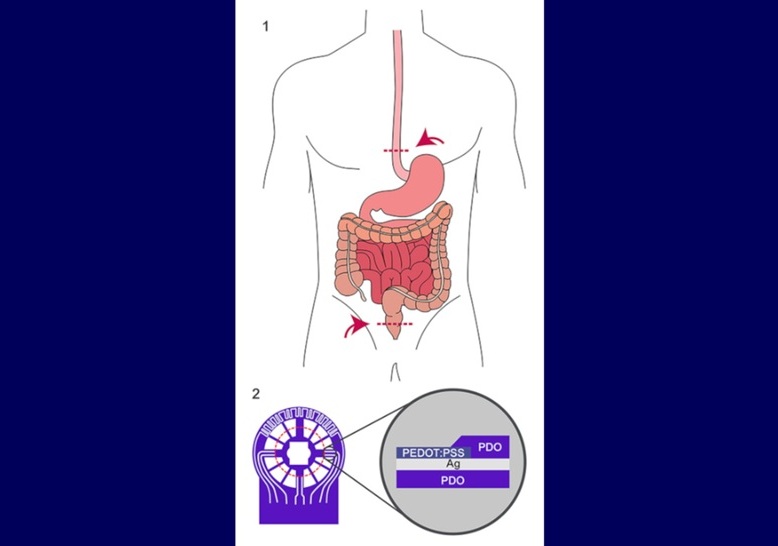US FDA Demands Proof of Antibacterial Soap Claims
|
By HospiMedica International staff writers Posted on 02 Jan 2014 |
Manufacturers of nonprescription antibacterial hand soaps and body washes will soon be required to show their products are more effective than plain soap in stopping the spread of infections.
The demand made by the US Food and Drug Administration (FDA; Silver Spring, MD, USA) does not apply to hand sanitizers and wipes, which are alcohol-based and are not used with water, or to antibacterial products used in the healthcare setting. Failing to meet these standards would mean that the antiseptic ingredients used in the products would have to be removed from over-the-counter (OTC) products, or that antibacterial claims are removed from product labeling. The FDA has been reviewing antibacterial active ingredients for the past several years, and hopes to finalize the rule by late 2016.
Over 2,200 antibacterial hand soaps and body washes are currently available for consumers in the United States alone, but there is no scientific evidence showing these products are any more effective at preventing illness than washing hands with plain soap and water. In fact, some data suggest that long-term exposure to certain active ingredients used in antibacterial products, such as triclosan and triclocarban, engender health risks such as bacterial resistance or hormonal imbalances (for example with estrogen, testosterone, and thyroid hormones).
“In order for antibacterial soaps and body washes to be considered generally recognized as effective, manufacturers would be required to conduct clinical trials demonstrating that their products are more effective than plain soap and water in preventing illness and the spread of certain infections when they're used by consumers,” said Sandra Kweder, MD, deputy director of the Office of New Drugs at the FDA's Center for Drug Evaluation and Research (CDER).
“Antibacterial soaps and body washes are used widely and frequently by consumers in everyday home, work, school, and public settings, where the risk of infection is relatively low,” said Janet Woodcock, MD, director of the CDER. “Due to consumers’ extensive exposure to the ingredients in antibacterial soaps, we believe there should be a clearly demonstrated benefit from using antibacterial soap to balance any potential risk.”
The proposed rule does not require the antibacterial soap products to be removed from the market at this time. When the proposed rule is finalized, either companies will have provided data to support an antibacterial claim, or if not, they will have to reformulate or re-label these products in order to continue marketing.
Related Links:
US Food and Drug Administration
The demand made by the US Food and Drug Administration (FDA; Silver Spring, MD, USA) does not apply to hand sanitizers and wipes, which are alcohol-based and are not used with water, or to antibacterial products used in the healthcare setting. Failing to meet these standards would mean that the antiseptic ingredients used in the products would have to be removed from over-the-counter (OTC) products, or that antibacterial claims are removed from product labeling. The FDA has been reviewing antibacterial active ingredients for the past several years, and hopes to finalize the rule by late 2016.
Over 2,200 antibacterial hand soaps and body washes are currently available for consumers in the United States alone, but there is no scientific evidence showing these products are any more effective at preventing illness than washing hands with plain soap and water. In fact, some data suggest that long-term exposure to certain active ingredients used in antibacterial products, such as triclosan and triclocarban, engender health risks such as bacterial resistance or hormonal imbalances (for example with estrogen, testosterone, and thyroid hormones).
“In order for antibacterial soaps and body washes to be considered generally recognized as effective, manufacturers would be required to conduct clinical trials demonstrating that their products are more effective than plain soap and water in preventing illness and the spread of certain infections when they're used by consumers,” said Sandra Kweder, MD, deputy director of the Office of New Drugs at the FDA's Center for Drug Evaluation and Research (CDER).
“Antibacterial soaps and body washes are used widely and frequently by consumers in everyday home, work, school, and public settings, where the risk of infection is relatively low,” said Janet Woodcock, MD, director of the CDER. “Due to consumers’ extensive exposure to the ingredients in antibacterial soaps, we believe there should be a clearly demonstrated benefit from using antibacterial soap to balance any potential risk.”
The proposed rule does not require the antibacterial soap products to be removed from the market at this time. When the proposed rule is finalized, either companies will have provided data to support an antibacterial claim, or if not, they will have to reformulate or re-label these products in order to continue marketing.
Related Links:
US Food and Drug Administration
Latest Critical Care News
- Remote Ventilate View Platform Enables Real-Time Monitoring of Patient-Ventilator Asynchrony
- Soft “Cyborg” Cardiac Patches Improve Stem Cell Heart Repair
- Soft Wearable System Offers Continuous Wireless Monitoring of Neonatal Health
- AI-Enhanced Wearables Could Transform Type 2 Diabetes and Prediabetes Care
- Breathable Electronic Skin Paves Way for Next-Generation Wearable Devices
- AI Transforming Colon Cancer Diagnosis
- Ventricular Assist Device Offers Long-Term Use in Children Waiting for Donor Heart
- Precision Approach Improves Immunotherapy Effectiveness for ICU Patients with Sepsis
- Soft Robots Could Donate Their Heart to Humans
- Bioadhesive Strategy Prevents Fibrosis Around Device Implants on Peripheral Nerves
- Miniature Non-Invasive Robotic Catheters to Improve Infertility Treatments
- Stick-On Patch Monitors Baby's Movements In Utero
- EEG-Based AI Technology Accurately Diagnoses Alzheimer’s and Dementia
- Robot Lymphatic System Paves Way for Self-Powered Wearables and Machines
- Focused Ultrasound Technique Successfully Treats Pediatric Brain Cancer
- Nasal Drops Fight Brain Tumors Noninvasively
Channels
Surgical Techniques
view channel
Simple Bypass Protocol Improves Outcomes in Chronic Cerebral Occlusion
Chronic cerebral arterial occlusion and moyamoya disease are major causes of ischemic stroke, particularly in regions where access to advanced diagnostic tools is limited. Assessing cerebral blood flow... Read more
Implantable Absorbable Sensor Detects Life-Threatening Complications After Intestinal Surgery
Intestinal anastomoses are among the riskiest procedures in abdominal surgery, with complications such as circulatory disorders or immune reactions often developing rapidly and unpredictably.... Read morePatient Care
view channel
Revolutionary Automatic IV-Line Flushing Device to Enhance Infusion Care
More than 80% of in-hospital patients receive intravenous (IV) therapy. Every dose of IV medicine delivered in a small volume (<250 mL) infusion bag should be followed by subsequent flushing to ensure... Read more
VR Training Tool Combats Contamination of Portable Medical Equipment
Healthcare-associated infections (HAIs) impact one in every 31 patients, cause nearly 100,000 deaths each year, and cost USD 28.4 billion in direct medical expenses. Notably, up to 75% of these infections... Read more
Portable Biosensor Platform to Reduce Hospital-Acquired Infections
Approximately 4 million patients in the European Union acquire healthcare-associated infections (HAIs) or nosocomial infections each year, with around 37,000 deaths directly resulting from these infections,... Read moreFirst-Of-Its-Kind Portable Germicidal Light Technology Disinfects High-Touch Clinical Surfaces in Seconds
Reducing healthcare-acquired infections (HAIs) remains a pressing issue within global healthcare systems. In the United States alone, 1.7 million patients contract HAIs annually, leading to approximately... Read moreHealth IT
view channel
EMR-Based Tool Predicts Graft Failure After Kidney Transplant
Kidney transplantation offers patients with end-stage kidney disease longer survival and better quality of life than dialysis, yet graft failure remains a major challenge. Although a successful transplant... Read more
Printable Molecule-Selective Nanoparticles Enable Mass Production of Wearable Biosensors
The future of medicine is likely to focus on the personalization of healthcare—understanding exactly what an individual requires and delivering the appropriate combination of nutrients, metabolites, and... Read moreBusiness
view channel
Philips and Masimo Partner to Advance Patient Monitoring Measurement Technologies
Royal Philips (Amsterdam, Netherlands) and Masimo (Irvine, California, USA) have renewed their multi-year strategic collaboration, combining Philips’ expertise in patient monitoring with Masimo’s noninvasive... Read more
B. Braun Acquires Digital Microsurgery Company True Digital Surgery
The high-end microsurgery market in neurosurgery, spine, and ENT is undergoing a significant transformation. Traditional analog microscopes are giving way to digital exoscopes, which provide improved visualization,... Read more
CMEF 2025 to Promote Holistic and High-Quality Development of Medical and Health Industry
The 92nd China International Medical Equipment Fair (CMEF 2025) Autumn Exhibition is scheduled to be held from September 26 to 29 at the China Import and Export Fair Complex (Canton Fair Complex) in Guangzhou.... Read more















